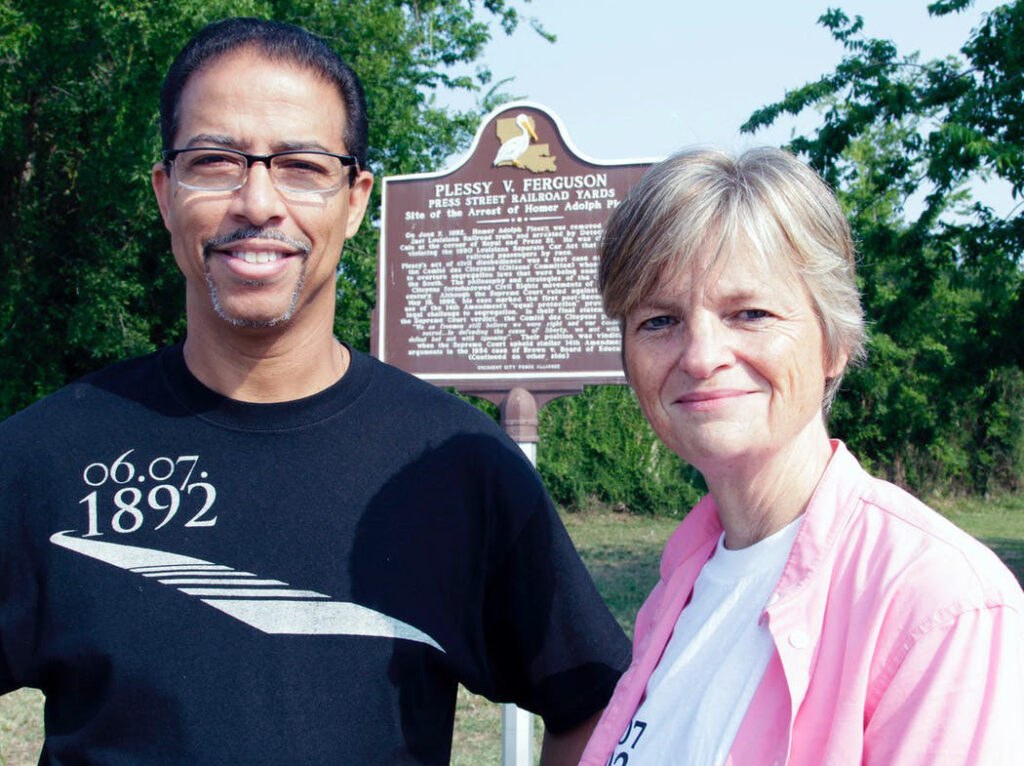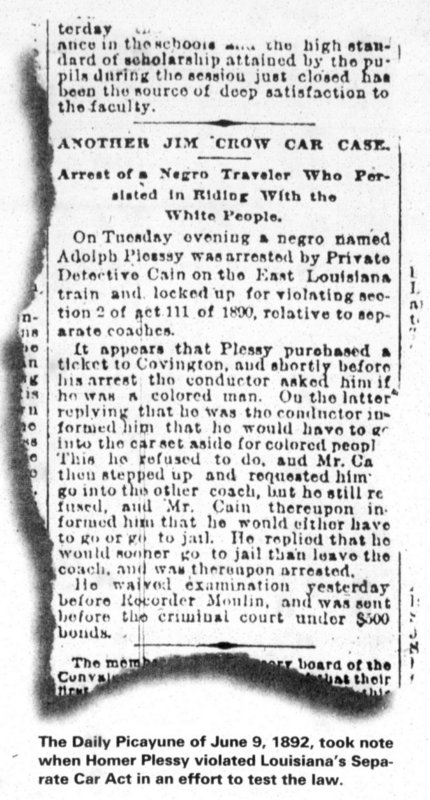Subscribe to the podcast: Apple | Spotify

125 years after being convicted for sitting down in a whites-only train car, the Louisiana Board of Pardons has voted to clear the record of Homer Plessy. In 1896 his landmark case, Plessy v. Ferguson, went before the Supreme Court which ruled to uphold “separate but equal” racial segregation which remained in effect until 1954.
In June 1892, Homer Plessy, a mixed race shoemaker in New Orleans, was arrested, convicted and fined $25 for taking a seat in a whites-only train car. This was not a random act. It was a carefully planned move by the Citizens Committee, an activist group of Free People of Color, to fight a new law being enacted in Louisiana which threatened to re-impose segregation as the reforms made after the Civil War began to dissolve.
The Citizens Committee recruited Homer Plessy, a light skinned black man, to board a train and get arrested in order to push the case to the Supreme Court in hopes of a decision that would uphold equal rights. Homer’s case was defeated 7 to 1. The case sharply divided the nation racially and its defeat “gave teeth” to Jim Crow.
The “separate but equal” decision not only applied to public transportation, it spread into every aspect of life — schools, public toilets, public eating places. For some 58 years it was not recognized as unconstitutional until the Brown v. Board of Education case was decided in 1954.
Homer Plessy died in 1925 and his conviction for breaking the law remained on his record. Now, Homer Plessy may be pardoned for his crime. The pardon was spearheaded by Keith Plessy, a descendent of Homer Plessy, and Phoebe Ferguson, the great-great granddaughter of John Howard Ferguson, the convicting judge in the case. The two have joined forces digging deep into this complex, little known story – setting the record straight, and working towards truth and reconciliation in the courtrooms, on the streets and in the schools of New Orleans and across the nation.
The Plessy and Ferguson Foundation is responsible for erecting plaques throughout New Orleans commemorating African American historic sites and civil rights leaders. This episode also delves into the story of one of these markers commemorating the integration of the McDonogh 19 Elementary School by three 6-year-old African American girls in 1960.

